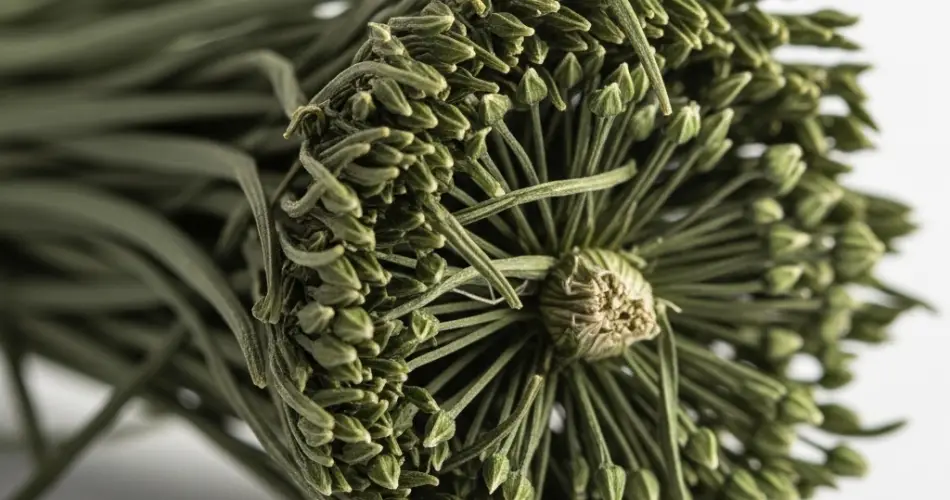Chives are a popular herb in home kitchens, loved for their mild onion flavor and bright green color. They’re versatile in many dishes—soups, salads, eggs, dips, and more. However, since chives grow in abundance during the warmer months and don’t store well fresh for long, preserving them for later use is a smart move. Drying chives is one of the best ways to extend their shelf life, and with proper storage, you can enjoy their flavor all year round.
This guide will walk you through the steps of harvesting, drying, and storing chives to preserve their color and taste for long-term use.
When and How to Harvest Chives
Chives can be harvested as soon as they are about 6 inches tall. The best time to pick them is in the morning after the dew has dried, but before the sun gets too strong. This is when the essential oils in the leaves are at their peak, offering the best flavor and aroma.
Use clean, sharp scissors to cut the leaves about 1–2 inches above the soil. Never cut all the way down to the base—leave some growth so the plant can recover quickly and continue producing. You can harvest chives every few weeks during the growing season.
For drying purposes, it’s best to gather a good amount at once to make the drying process more efficient.
Cleaning and Preparing Chives
After harvesting, rinse the chives gently under cool water to remove any dirt or insects. Shake off excess water and lay them out on a clean kitchen towel or paper towels. Pat them dry carefully, as excess moisture can cause spoilage during drying.
Once dry, bundle the chives together or line them up for chopping. Some people prefer drying whole stalks, but cutting them into small pieces before drying is often more convenient, especially if you plan to use them directly from storage when cooking.
Cut the chives into small, uniform pieces—about ¼ inch in length—using clean scissors or a sharp knife.
Drying Methods for Chives
There are several methods to dry chives, and each one has its pros and cons. The goal is to remove moisture while preserving as much color and flavor as possible.
1. Air Drying
This is the most natural and energy-efficient method. Spread the chopped chives in a single layer on a clean paper towel, mesh screen, or drying rack. Place them in a warm, dry, and well-ventilated space out of direct sunlight.
It may take 5 to 10 days for the chives to fully dry, depending on humidity and airflow. Turn them occasionally to help them dry evenly.
2. Oven Drying
Oven drying is faster than air drying and works well in humid climates. Preheat your oven to the lowest setting (around 150°F or 65°C). Spread the chopped chives in a single layer on a baking sheet lined with parchment paper.
Place the tray in the oven with the door slightly ajar to allow moisture to escape. Check every 10 to 15 minutes, stirring occasionally to prevent burning. Drying usually takes 1 to 2 hours. The chives are done when they crumble easily between your fingers.
3. Dehydrator Method
A food dehydrator offers the most consistent results. Spread the chopped chives evenly on the dehydrator trays. Set the temperature to 95–115°F (35–46°C), and let them dry for 2 to 4 hours, depending on your appliance and the thickness of the pieces.
The result is evenly dried chives that retain more flavor and color compared to other methods.
How to Store Dried Chives
Once completely dry, let the chives cool before transferring them to an airtight container. Glass jars, spice containers, or resealable bags all work well. Avoid storing them in plastic containers if possible, as these can trap moisture and lead to mold.
Label your container with the drying date to keep track of freshness. Store the container in a cool, dark, and dry place—like a pantry or spice cabinet.
Properly dried and stored chives can retain good flavor for up to 12 months, although they’re best used within 6 months for optimal taste.
Tips for Using Dried Chives
Dried chives rehydrate quickly and can be added directly to most dishes. They’re perfect for soups, scrambled eggs, mashed potatoes, or any recipe that benefits from a touch of onion-like flavor.
If you’re using them in cold dishes like dips or salad dressings, consider soaking them in a tiny amount of warm water for a few minutes before mixing to bring out their flavor and soften their texture.
Final Thoughts
Drying chives is an easy and efficient way to ensure you always have this flavorful herb on hand. With just a little effort, you can enjoy the taste of your garden-grown chives long after the growing season has ended. Whether you choose air drying, oven drying, or a dehydrator, the result is a long-lasting herb ready to elevate your home-cooked meals any time of year.



